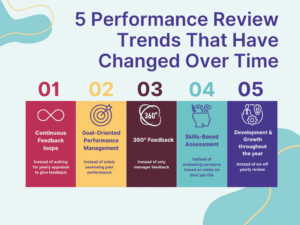In today’s fast-paced business world, feedback is an essential tool for improving employee performance and achieving organizational goals. But despite its importance, many organizations struggle to create a feedback culture that encourages open and honest communication. In this blog post, we will discuss in six simple steps how to install a feedback culture in your organization.
1. Set the tone from the top
Creating a feedback culture starts at the top. Leaders must model the behavior they want to see in their organization. They should be open to feedback and actively seek it out, both from their direct reports and other colleagues. By doing so, they create a culture where feedback is expected and valued.

2. Make feedback a regular practice
Feedback should not be reserved for annual performance reviews or end-of-year evaluations. Instead, it should be a regular practice that happens on a daily or weekly basis. This could involve regular check-ins with direct reports or team members, where feedback is given and received in a timely manner.
3. Provide training
Many people are uncomfortable with giving or receiving feedback, particularly if they are not used to doing so. Providing training on how to give and receive feedback can help to overcome this discomfort and create a more positive feedback culture.
4. Create a safe space for feedback
People are more likely to give honest feedback if they feel safe to do so. This means creating an environment where people are not afraid to speak up and where feedback is received without judgment. Leaders can create this safe space by acknowledging the value of feedback, encouraging open communication, and demonstrating a willingness to act on the feedback received.
5. Use technology to facilitate feedback
Technology can play a key role in creating a feedback culture. For example, tools like 360-degree feedback software can provide a structured approach to feedback, making it easier to give and receive feedback in a timely and effective manner.
6. Recognize and reward feedback
Finally, it’s important to recognize and reward feedback. This could involve public recognition for those who give feedback or incentives for those who receive and act on feedback. By recognizing and rewarding feedback, organizations can reinforce the value of this important practice.
In conclusion, creating a feedback culture takes time and effort, but the benefits are significant. By setting the tone from the top, making feedback a regular practice, providing training, creating a safe space for feedback, using technology to facilitate feedback, and recognizing and rewarding feedback, organizations can create a culture where feedback is valued and contributes to organizational success.



